Discussion of comics copyright and trademarks of classic British comics spurred by Rebellion’s established ownership of the TV21 brand led me to investigate which titles Marvel Comics registered in Britain. Or, largely, Marvel UK – who were keen to put their very firm property stamp on various projects down the decades. My investigations turned up some interesting “Might Have Been” titles from the 1990s.
An online search of Britain’s Intellectual Property Office reveals Marvel trademarked numerous characters and properties from 1966 onwards in the UK, separate to its copyright assertions in the United States.
None of these trademarks are “live” today – the last expired in 1999, but make for interesting reading as some offer clues to characters and titles that were never published, particularly in 1992 and 1993, at the height of the “Marvel Genesis” era instigated by Paul Neary.
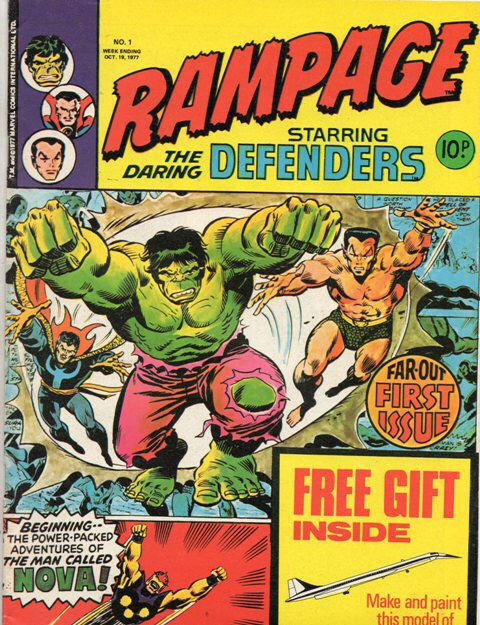
Details of Marvel- related British trademarks under “Class 16” used for for printed matter, photographs and similar items held by the IPO begin with “Torch“, registered 3rd October 1966, but there seems to be a lull in activity until 1977, when Marvel trademarked both Rampage (one of their many titles, launched in October 1977) and Howard the Duck in the UK, followed by Star-Lord, Hulks and The Incredible Hulk in 1978.
(Examination of the online IPO documentation suggests the department regularly destroys paper records of old trademarks. I am not sure if this means some Marvel records might be missing. Comparison with other publishers such as DC Thomson, for example, indicates the IPO holds many details about the Dundee-based publisher going back even earlier than the 1960s – they still have Magic Comic registered as a brand, for example, even though the title has not been published since the 1940s!).
Three Fantastic Four characters – Mr. Fantastic, Invisible Girl, and the Human Torch were trademarked in 1979, which may seems at odds with the only non-comics exposure for the characters of the time, the 1978 The Fantastic Four animated series, which might have prompted licensing interest in the team. The Human Torch doesn’t feature in that show, replaced by the robot, H.E.R.B.I.E., voiced by Frank Welker.
However, Marvel would have been aware that Universal had optioned a live action Human Torch show, along with Dr. Strange and Captain America, following the success of The Incredible Hulk TV show starring Bill Bixby and Lou Ferrigno. (Mark Evanier notes here that a Human Torch teleplay was written, but never produced). This might be why they trademarked the character, although if that’s true, why didn’t they trademark The Thing? Was the name too generic, which is one reason trademark applications are dismissed?
The 1980s sees a few more superhero trademarks for the UK: Thor and a renewal of The Incredible Hulk in 1980, The Amazing Spider-Man in 1982 and Iron Man in 1989. Marvel also registered The Transformers as a publication title in May 1984, well ahead of the title’s actual launch in September the same year.
Our first real trademark mystery lies with Misty, registered in October 1985. Fleetway’s Misty title was published between 1978 and 1980 and continued as Tammy and Misty until 1984. Was someone at Marvel UK canny enough to spot a potential revival of the brand – or does the trademark refer to Misty Knight, of Power Man and Iron Fist fame? Sadly, there are few details provided, but if the latter, was someone planning, perhaps, a TV show based on the character?
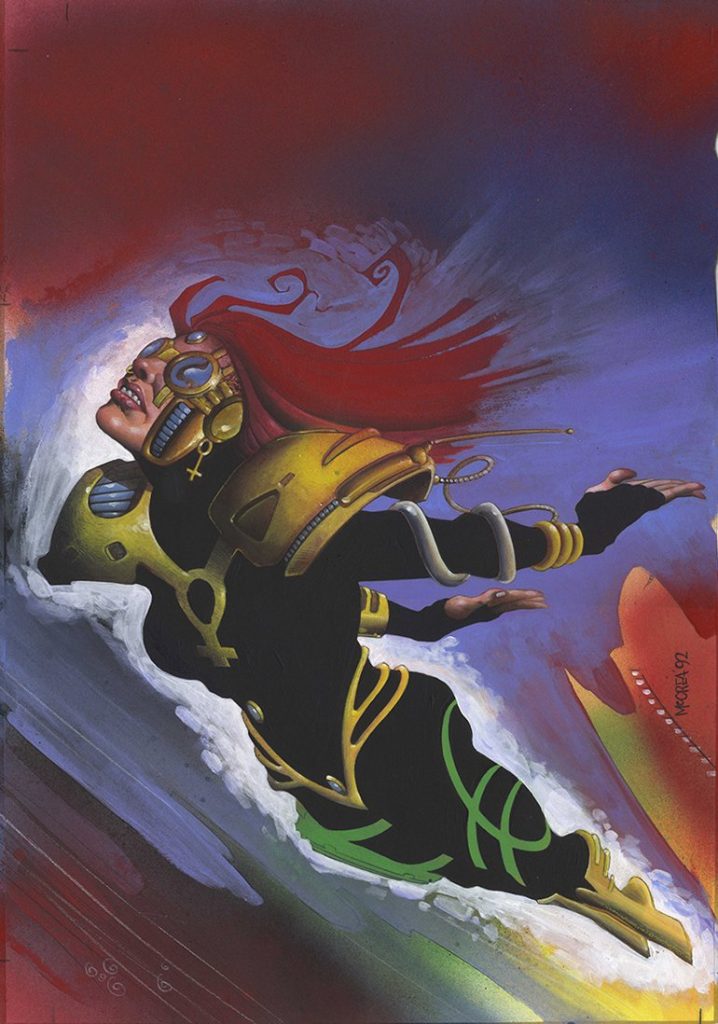
The 1990s sees a flurry of trademark registrations, prompted in part by the kerfuffle caused by the launch of one of Marvel UK’s core “Genesis 1992” titles, Hell’s Angel. The launch prompted a cease and desist from the Hells Angels against Marvel in the United States, Marvel donating $35,000 to Ronald McDonald House, a charity that helps children with cancer, in settlement with the biker organisation.
Marvel UK was advised to conduct trademark searches, and register its core titles – particularly its most successful ones – to avoid any further legal brickbats.

The trademarks begin with the short-lived weekly comic Havoc and sister monthly, Meltdown in May 1991, the two titles whose sales were used to gauge the potential success of Marvel UK’s real stab at creating a rival to 2000AD, Overkill, which was registered in July 1992.
Intriguingly, two other names, Aeon and Darkfall, were also registered in May 1991. Were these possible alternative titles for Havoc and Meltdown?
December 1991 sees the registration of Warheads – another core “Genesis 1992” book, which I recall the registration documentation for, advising permission was given, providing no attempt was made to market missiles with the same name. (No – really). MYS-TECH – the secretive organisation behind many a storyline in the Genesis 1992 universe was also trademarked at the same time, along with Motormouth, but not Knights of Pendragon, even though that book’s first series had been a critical success for the company and a second was in the works.
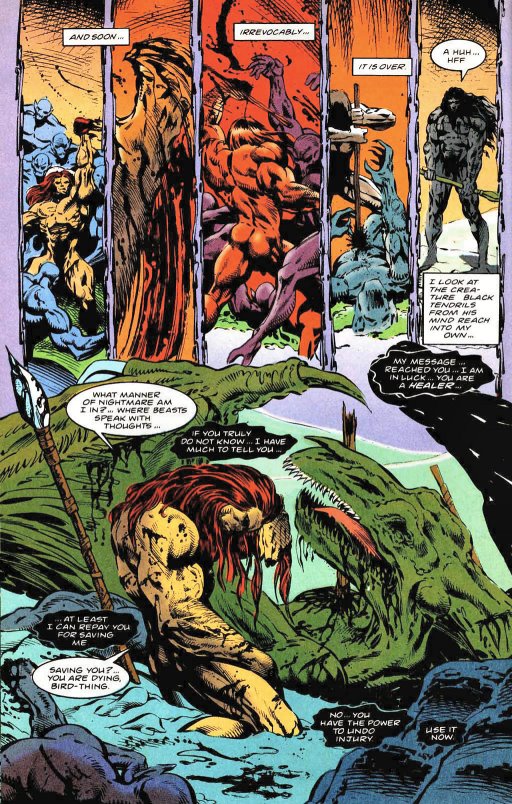
July 1992 sees the registration of Blood-Cede along with Bloodseed, the latter the title of the short-lived book created by Paul Neary and Liam Sharp. Death Metal – the first of many derivations of Death’s Head – Gunrunner, Plasmer and Wild Thing are registered at the same time, all of which saw titles published.
Die-Cut gets registered in September 1992, followed by Genetix, Dances with Demons and Demon Dancer, the latter again presumably an alternative title for the Frontier imprint written by Simon Jowett, with art by a young Charlie Adlard, coloured by Steve Whitaker and Tony Lee.
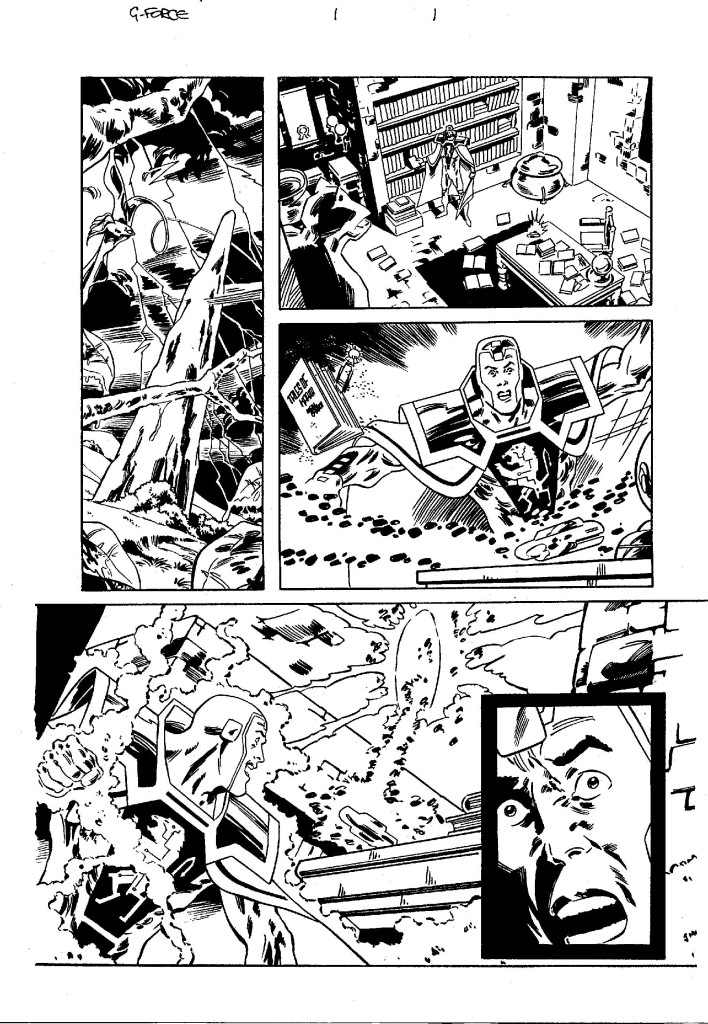
The year closes out with a registration for Graviton – perhaps an alternate to G-Force, created by John Freeman and John Ross.
Recorded registrations for 1992 are Meanstreak, Heathen, Model Soldier, Psycho-Warrior, ‘Roid Rage and Tensec – the latter two the only ones that got as far as solicitation or news items in the comics press of the time, as noted on our Genesis 1992 page.
(Former MUK editor Gary Russell thinks Model Soldier may – and, he stresses, may – relate to a team of female guns-for-hire called Model Soldiers he created when he wrote his issues of Dark Angel).
1993 kicks off with an early registration for Mys-TECH Wars, the four issue limited series written by Dan Abnett with art by Bryan Hitch bringing plot line and and both US and UK characters together in one stellar conflict; and Shadow Riders, a series created by John Freeman and Brian Williamson with art by Ross Dearsley.
This is followed by a trademark for The Punisher to protect the violent vigilante in the UK in March – perhaps as a precursor to the planned but unpublished Death’s Head versus Punisher crossover, although this was not actually solicited through Diamond until December 1993.
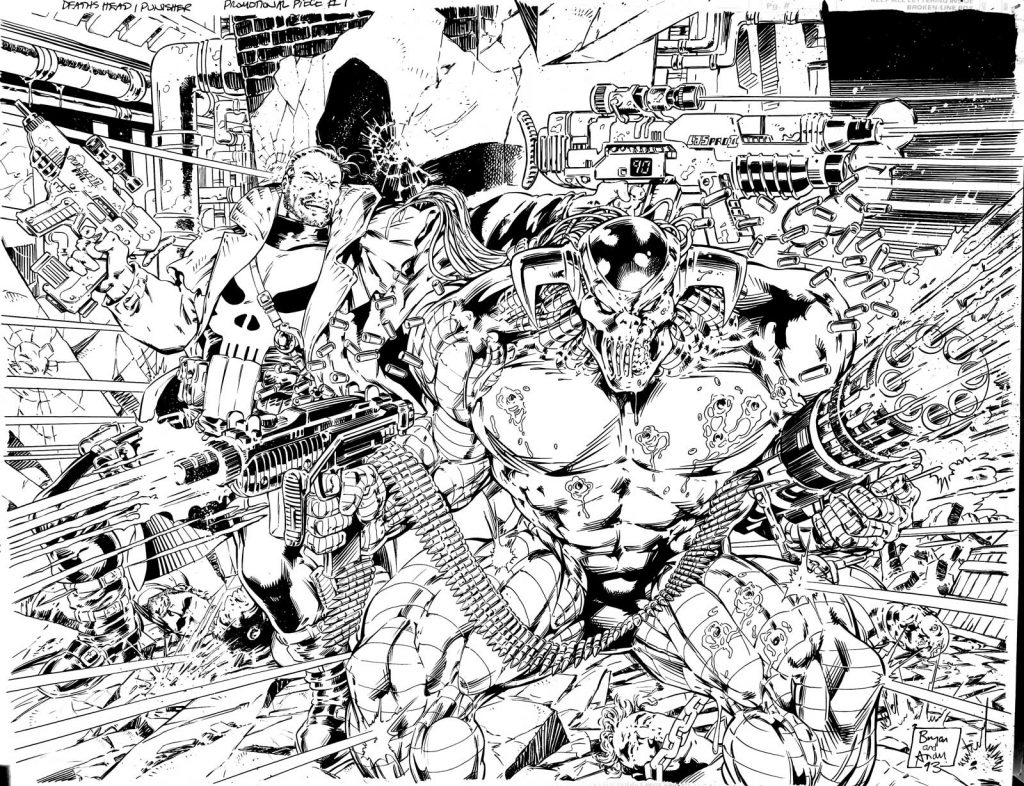
Moves were clearly afoot to revive Night-Raven, a character first created for Hulk Weekly by Steve Parkhouse and David Lloyd back in the 1970s, because the character name was trademarked in April 1993.
The next flurry of trademark registrations comes in June 1992 with Battletide, released in the United States as a limited series and a bumper Overkill special in the UK; Bloodrush, one of the planned titles in the Red Mist 20-20 line; Cyberspace 3000, Death Duty, Immortalis, and Dr. Deadly, the latter another mystery!
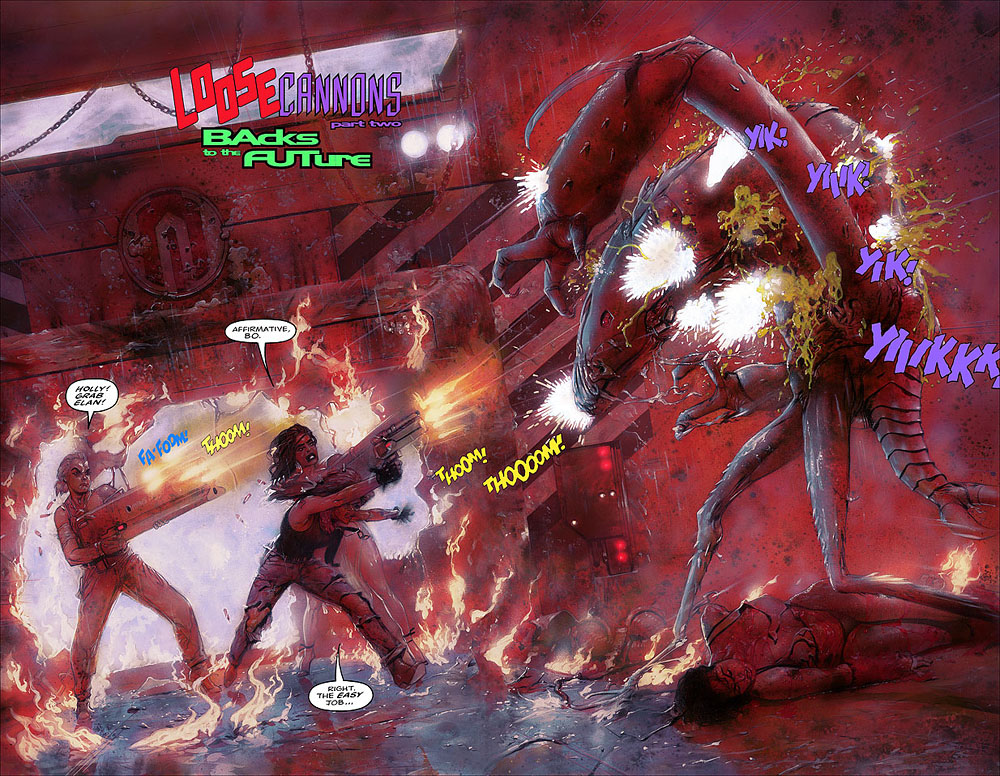
Despite the character’s huge success, Death’s Head is only finally registered in August 1993, along with Deathnell and Death-Wreck – two of many “Death” titles of which Paul Neary had a long list of ideas! Gene Machine, was also registered, the creation of writer Michael Cook and artist Christian Gorny, as was the almost-completed Loose Cannons, written by Dan Abnett with stunning art by 2000AD‘s Mark Harrison, published by Mark online here. Marvel UK also trademarked Ripwire and Timestryke, two more titles that were solicited but which, ultimately never went ahead as the company imploded.
No further titles were trademarked until 1995, when Marvel UK, soon to become part of Marvel acquisition Panini, sought trademark protection for some magazine titles: Hellbreed, Playback, and in one final gasp of successful applications, Quiz Mania and Marvel Manga, in November and December respectively.
While we’ve discovered plenty of information about some planned Marvel UK projects in the past, this IPO search has revealed more mysteries about the company’s various plans and titles.
Perhaps someone needs to track down MUK’s then Editorial Director Paul Neary for a full, frank and detailed interview… as long as it’s in a decent pub!
• More about Marvel UK’s “What Might Have Been” titles on our “Genesis 1992” page
The founder of downthetubes, which he established in 1998. John works as a comics and magazine editor, writer, and on promotional work for the Lakes International Comic Art Festival. He is currently editor of Star Trek Explorer, published by Titan – his third tour of duty on the title originally titled Star Trek Magazine.
Working in British comics publishing since the 1980s, his credits include editor of titles such as Doctor Who Magazine, Babylon 5 Magazine, and more. He also edited the comics anthology STRIP Magazine and edited several audio comics for ROK Comics. He has also edited several comic collections, including volumes of “Charley’s War” and “Dan Dare”.
He’s the writer of “Pilgrim: Secrets and Lies” for B7 Comics; “Crucible”, a creator-owned project with 2000AD artist Smuzz; and “Death Duty” and “Skow Dogs” with Dave Hailwood.
Categories: British Comics, downthetubes Comics News, downthetubes News
 Portsmouth Comic Con announces 2024 Talent Search
Portsmouth Comic Con announces 2024 Talent Search  Exclusive: SF thriller “Pilgrim: Secrets and Lies” continues at B7 Comics
Exclusive: SF thriller “Pilgrim: Secrets and Lies” continues at B7 Comics  Rebellion Releases: “Brink” is back in 2000AD, new Judge Dredd Megazine hist stores
Rebellion Releases: “Brink” is back in 2000AD, new Judge Dredd Megazine hist stores  New Eagle Times spotlights pioneering female comic artist Lily Renée
New Eagle Times spotlights pioneering female comic artist Lily Renée